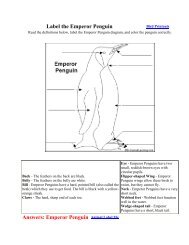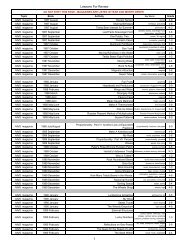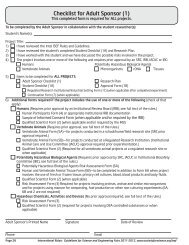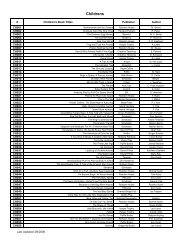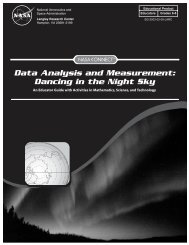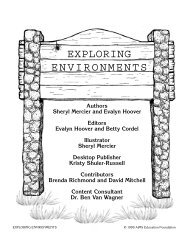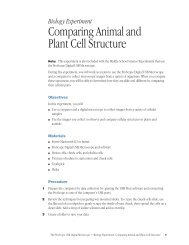BIOGRAPHY OF A RIVER
BIOGRAPHY OF A RIVER
BIOGRAPHY OF A RIVER
You also want an ePaper? Increase the reach of your titles
YUMPU automatically turns print PDFs into web optimized ePapers that Google loves.
the same on the surface, with grass, weeds, and trees becoming established, is it really the same in allof its characteristics? Before mining activities, rainfall seeped slowly down through soil and rock untilit reached a relatively impervious rock layer. Mining of groundwater above and below the water tablewas slow through many small channels that had probably been established over hundreds or thousandsof years. After reclamation, rainwater that does not run off over land will penetrate the soil and a layerof disrupted rocks. It will flow more readily due to increased amounts of open spaces between blocksof rock and cracks within the rock. In some areas, remaining seams of coal or organic-rich shaleassociated with coal may contain sulfide minerals that are chemically converted to sulfate minerals onexposure to air or oxygen-rich groundwater. Sulfate minerals readily dissolve in the water making thewater more acidic (actually, like very diluted sulfuric acid). The size of the rock chunks creates a muchgreater surface area for the rainwater to contact coal. In addition to the sulfate minerals alreadydissolved, this acidic water causes additional leaching of minerals and natural elements from the rock.Some elements, therefore, get into groundwater in much greater concentrations than normally found.When that groundwater reappears in a spring or stream, it will be carrying those increased chemicalconcentrations to other areas far away from the originally mined land. The acidic waters that are formedin this way are called acid mine drainage.Termsacid mine drainage: acidic waters that are formed in mine areas from water coming into increasedcontact with sulfate and sulfide minerals. This forms sulfuric acid.contour: (1) imaginary line on the surface of the Earth connecting points of the same eleva (2) away of shaping the surface of the land in a particular form, commonly used to prevent erosion andcontrol water flowleaching: the removal of chemical constituents from rocks and soil by water (Leach = to leak)permeability: the capacity of a porous material to transmit fluids. Permeability is a function of the sizes,shapes, and degree of connection among pore spaces, the viscosity of the fluid, and the pressuredriving the fluid.reclamation: bringing land that has been disturbed by some process back to its original conditionsettling pond: usually a human-made pond that is designed to remove many of the particularly fromrunoff waterADVANCE PREPARATIONA. Go over Background Information with students.3-84




